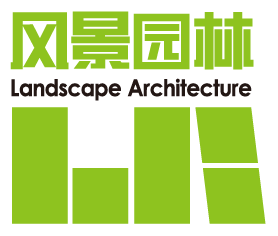Abstract:
Objective Rapid urbanization exacerbates the disconnection between urban residents and nature, posing significant public health challenges. Urban green spaces (UGS) — a critical natural resource in urban environments — are increasingly acknowledged as an essential tool for mitigating urbanization-related issues and reducing public health risks. Therefore, providing effective green space to urban dwellers is critical for environmental and social interventions in public health. Extensive research has highlighted the salutary benefits of UGS on residents’ health, with exposure emerging as a critical mediator of these health outcomes. However, methodological ambiguities persist regarding the classification of UGS exposure forms and green space categories, potentially obfuscating the understanding of distinct health benefits of different types of green space exposure characteristics, thereby constraining the development of targeted urban health intervention. Green space exposure is a key factor linking the natural environment to human health. Depending on health impact mechanisms, green space exposure can be divided into passive and active exposure. Passive exposure involves the unconscious effects of the environmental attributes of green spaces on people, highlighting the objective role of green spaces as environmental media. Active exposure, however, involves interactions between individuals and green spaces through various activities, emphasizing the active role of individuals in utilizing these spaces. Existing research shows significant variation in defining and quantifying green space exposure. This lack of a consistent conceptual and quantitative framework leads to inconsistent findings on the health benefits of green spaces, undermining the reliability and applicability of research evidence. Urban green spaces include residential green spaces, park green spaces, street green spaces, and other types, each with unique characteristics and functions. While previous research has explored the health effects of different green space types to some extent, comprehensive comparisons of their health benefits based on land use and exposure characteristics are still limited. Consistent indicators are essential for such comparisons, yet their absence in previous research may have contributed to inconsistent conclusions. Identifying the health benefits and differentiation of diverse urban green space exposure characteristics within community life circle can address relative evidence gaps while informing more precise, effective planning strategies for practical applications.
Methods This research employs a case study of Beijing’s central urban area, utilizing random forest model integrated with Shapley additive explanation (SHAP) to quantify the relative contribution of multi-dimensional UGS exposure characteristics to health benefits. A total of 1,116 residents from 36 neighborhoods are examined using multi-source data, involving green space metrics, health outcomes survey, and demographic and socioeconomic indicators. The green space metrics comprise four types of green spaces (residential green space, park green space, street green space, and other green spaces) across two dimensions (passive exposure and active exposure). Passive exposure encompasses three indicators — area, distance, and NDVI — while active exposure includes three indicators: frequency, duration and intensity. The health outcomes of residents are assessed via the Quality Metric-authorized Chinese version of the SF-12v2 scale. Demographic and socioeconomic indicators, including age, gender, population density, etc., serve as model covariates.
Results The research results indicate significant differences in active and passive exposure characteristics to various green spaces within the community life circle of Beijing’s central urban area. This is closely related to the functional attributes and usage of these spaces. The impact of different green space exposure dimensions on residents’ physical and mental health also shows marked differences. Specifically, passive exposure is more effective than active exposure in improving physical health. Conversely, active exposure contributes more to mental health than passive exposure. Among different green space types, park green space is most beneficial for physical health, while residential green space is most beneficial for mental health. This highlights the central role of parks and residential areas in delivering health benefits. Among all green space exposure metrics, the area of park green space is the most critical for physical health, and the activity intensity in residential green space is the most critical for mental health. These findings provide a basis for implementing precise health-oriented intervention measures. Additionally, individual-level factors, such as neighborhood relationships, age, and sleep quality, are significantly correlated with and influential on health outcomes.
Conclusion This research reveals a distinctive relationship between UGS exposure characteristics and health benefits, demonstrating that passive exposure predominantly enhances physical health regulation, while active exposure drives mental health restoration. Park green spaces and residential green spaces serve as critical spatial carriers for promoting physical and mental health benefits, respectively. The key metrics, such as park green area and residential activity intensity, could offer quantifiable parameters to inform the spatial optimization of “Healthy City” development frameworks. These findings suggest the importance of accurately matching the types and exposure mode of green spaces in improving the health benefits of residents.

 下载:
下载:
